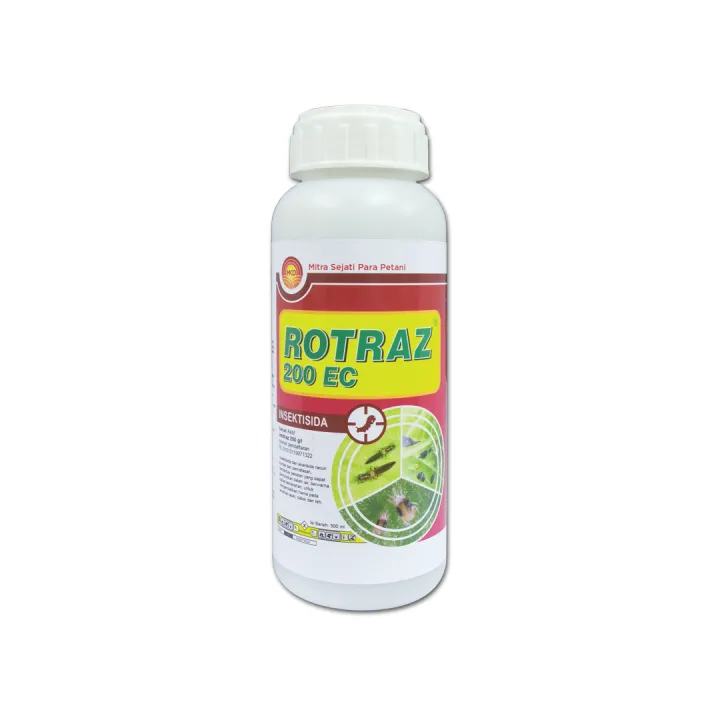ROTRAZ® 200 EC

Active Ingredient: amitraz 200 g/l
Insecticides and acaricides, contact and inhalation poisons, in the form of concentrates that can be emulsified in water, reddish-brown in color, to control pests on apple and chili plants.
ADVANTAGES OF ROTRAZ 200 EC
- INSECTICIDE AND ACARICIDES WITH MANY BENEFITS, ROTRAZ 200 EC with it's double working method is useful for eradicating many types of insect pests and mites at all growth stages to protect various types of plants.
- BROAD SPECTRUM, ROTRAZ 200 EC kills aphids, mealybugs, other sucking insect pests from the order Homoptera and various caterpillars that eat leaves, shoots, fruit, etc. from the order Lepidoptera, as well as many types of mites, including those from the families Tetranychidae and Eriophydae.
- ACCURATE DOUBLE WORK POWER, ROTRAZ 200 EC works as a contact poison and respiratory poison, so that the pests that are exposed to the spray will die and avoid the spray will also die because they are exposed to the vapor of the active ingredient amitraz and the residue (spray residue) left on the plants.
- LOW TOXICITY TO OTHER ORGANISM, ROTRAZ 200 EC with the active ingredient amitraz has relatively low toxicity to humans and mammals, poultry, fish and other non-target organisms. In the WHO classification, amitraz is included in the lowest class.
| Target Plants and Pests | Dose/Formulation Concentrate | Method and Timming of Application |
|---|---|---|
Apple Mite Tetranychus sp. | 2 ml/l | Application is carried out by spraying high volumes when the pest population/intensity of attack has reached its control threshold according to local recommendations. Spray volume 1000 - 1200 l/ha according to the age of the plant. If it is not clear, contact the authorized agricultural officer. |
Chilli Mite Polyphagotarsonemus latus | 2 ml/l | Application is carried out by spraying high volumes when the pest population/intensity of attack has reached its control threshold according to local recommendations. Spray volume 400 - 800 l/ha according to the age of the plant. If it is not clear, contact the authorized agricultural officer. |